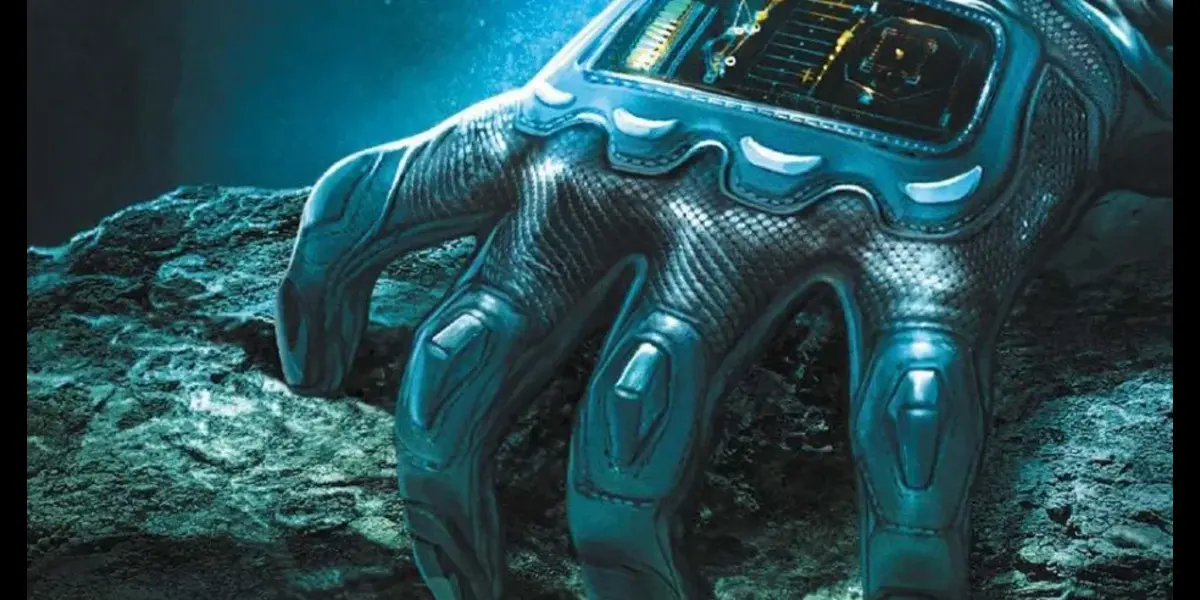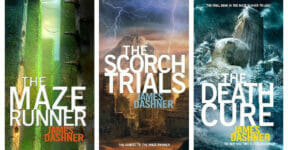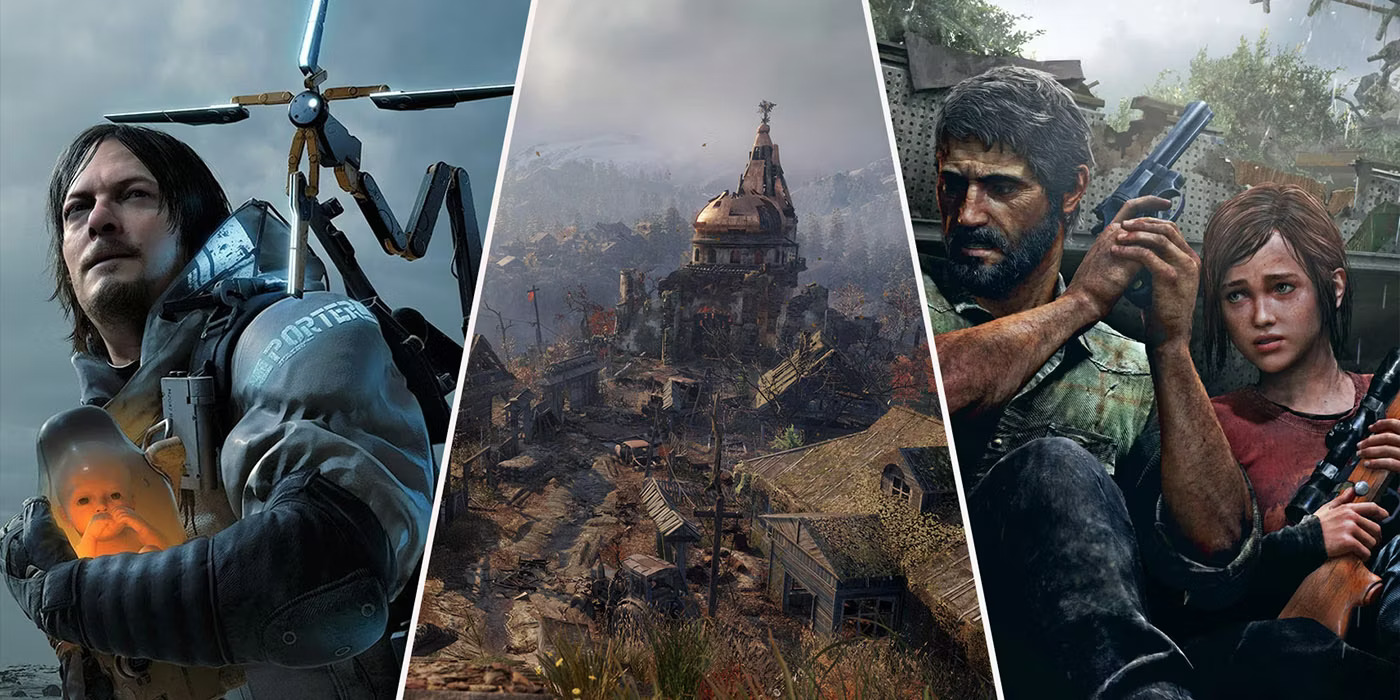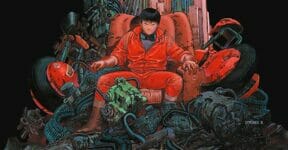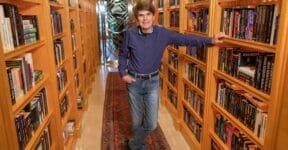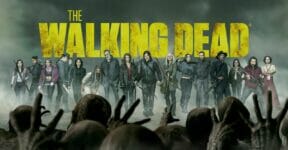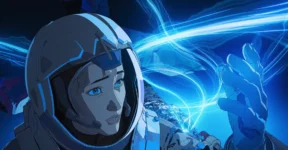One of the most important pillars of a horror story is the setting where everything is happening. In a typical horror tale, the set likely involves an isolated place or environment, often with a dreadful and mysterious past still hovering in the atmosphere. A large, empty, and dark building with a layout that resembles a maze, where even a group of people can get easily separated from each other and lost (a haunted house of some sort) should build the suspense. If the horror is happening within the realm of sci-fi, this peculiar place will have to include or reflect advanced technologies like robots, AI, spaceship, impossibly sophisticated devices, etc. A haunted space isn’t the only thing that makes a good sci-fi horror book. There are plenty of settings where great stories may take place. Here are just some examples.

- Dystopian worlds: a depiction of an oppressive society, where everybody has a mostly bleak outlook for the future. A dystopia is often shown as the absolute rule of an authoritarian regime, but there can be additional factors to make the world an especially terrible place, such as environmental disasters, technological developments gone wrong, rogue AI, near complete depletion of natural resources, alien invasion, and prolonged wars, among others. Dawn by Octavia Butler is an excellent take on the dystopian setting within the realm of science fiction. It has everything you might expect from a story that’s taking place in a seemingly hopeless future filled with xenophobia, gender politics, strict social hierarchy, and much more. If what you want is an exploration of human nature sprinkled with action, horror, shock, and empathy, Dawn is the book to read.
- Utopian societies: taken at face value, utopia is the exact opposite of dystopia. The setting brings you a depiction of an idealized future society where peace, freedom, progress, and justice walk hand-in-hand in perfect harmony. Everybody is happy. But in a typical sci-fi horror book, all those achievements usually come at a significant cost. Despite the guaranteed equality and everyone being morally sound, someone or something still rules a utopia. Seeking a perfect society, this ruler hides some dark secrets to maintain a veneer of peacefulness at the expense of the expendables. We’re talking about harvesting human organs, enslaving other species, genetic manipulation, etc. Your Utopia by Bora Chung is a collection of short stories that bring you into a journey through discovery and immortality, as well as loss and death. You’ll find a pleasing blend of dark humor, horror, absurdity, science fiction, idealism, and utopia/dystopia.
- Cyberpunk cities: among the most recognizable characteristics of a cyberpunk world is the high-tech environment standing on top of social decay. The setting likely portrays restless urban landscapes with neon-lit buildings, virtual reality, cybernetics, pervasive digital life, and a concoction of retro and futuristic aesthetics. Most cyberpunk stories also feature all-powerful corporations that act practically as the government. Neon Nightmares: Tales of Cyberpunk Horror by Sean Benoit is an example of how the cyberpunk setting is used as a vehicle to deliver a healthy dose of sci-fi horror. The assortment of stories contains such elements as lethal cybernetic implants, buggy virtual realities, hostile AI, and human overreliance on technology.
- Space explorations: the extraterrestrials have always been the staples of sci-fi horror. Space offers a myriad of settings to tell unique stories. Aliens, strange planets, interstellar travels, powerful ancient civilizations, wormholes; you name it, it’s there. Our next recommendation is another book by Octavia Butler, titled Bloodchild, a novella that imagines the future of humanity on an alien planet. As part of the deal to maintain peace, the aliens can implant their eggs on human bodies. The story is as sensitive as it is upsetting.
Of course, space setting also includes the usual claustrophobic nature of spaceships and space stations. And if the horrors are happening inside those facilities, the setting might not be entirely dissimilar to a haunted house, which brings us to the next book, Dead Silence by S. A. Barnes. Many things can happen when you step into an abandoned spaceship, from mayhem to mystery and even ghost apparitions. Admittedly, it’s a sci-fi horror book with additional elements taken from Gothic tales as well.
We think the variety of settings mentioned above represents only a fraction of what you can build to make a brilliant sci-fi horror book. A setting is defined as the time and place where the story happens or is told. Every story has a setting that affects the plot, characterizations, interpersonal relationships, conflicts, climax, and thematic exploration. Even a vast blank void of space or a complete darkness may hold a key role in how the story plays out. And no one says an author has to follow the convention of any particular setting; for example, an alien planet doesn’t have to be hostile in every corner, a haunted house isn’t always massive and dim, a dystopian society can have a secluded, peaceful underground community, a utopian city may hide grim horror under the shadows of the society, and so forth.
Other Things You Might Want to Know
Some space horror books you’d want to read:
- Gideon the Ninth by Tasmyn Muir
- Dead Silence by S.A. Barnes
- The Hematophages by Stephen Koziniewski
- The Scourge Between Stars by Ness Brown
- The Luminous Dead by Caitlin Starling
- We Have Always Been Here by Lena Nguyen
- Salvation Day by Kali Wallace
- Screams from the Void by Anne Tibbets
- Paradise-1 by David Wellington
Enjoyable horror films based on books not written by Stephen King:
Film | Book–Author |
| The Exorcist (1973) | The Exorcist (1971) by William Peter Blatty |
| Hellraiser (1987) | The Hellbound Heart (1986) by Clive Barker |
| The Woman in Black (2012) | The Woman in Black (1983) by Susan Hill |
| The Ring (2002) | Ring (1991) by Koji Suzuki |
| Candyman (1992) | The Forbidden by Clive Barker (part of Books of Blood: Volume V, 1985) |
| The Wicker Man (1973) | Ritual (1967) by David Pinner |
| 30 Days of Night (2007) | 30 Days of Night (2002), written by Steve Niles and illustrated by Ben Templesmith |
| The Ritual (2017) | The Ritual (2011) by Adam Nevill |
| Stir of Echoes (1999) | Stir of Echoes (1958) by Richard Matheson |
Stephen King is probably the most prolific horror writer for film adaptations. If his works must be included, the entire list will have dozens of his works alone.
Some of the most miserable “haunted house” films, according to Entertainment Weekly:
- The Changeling (1980)
- The Innocents (1961)
- The Uninvited (1944)
- The Evil Dead (1981)
- Hausu (1977)
- Lake Mungo (2008)
- The Ghost and Mrs. Muir (1947)
- The Haunting (1963)
- We Are Still Here (2015)
- The Orphanage (2007)
- The Conjuring (2013)
- A Tale of Two Sisters (2003)
- Poltergeist (1982)
- Scrooge (1951)
- House on Haunted Hill (1959)
- The Others (2001)
- Beetlejuice (1988)
- Hereditary (2018)
- Paranormal Activity (2007)
- Crimson Peak (2015)
- The Curse of the Cat People (1944)
- The Amityville Horror (1979)

